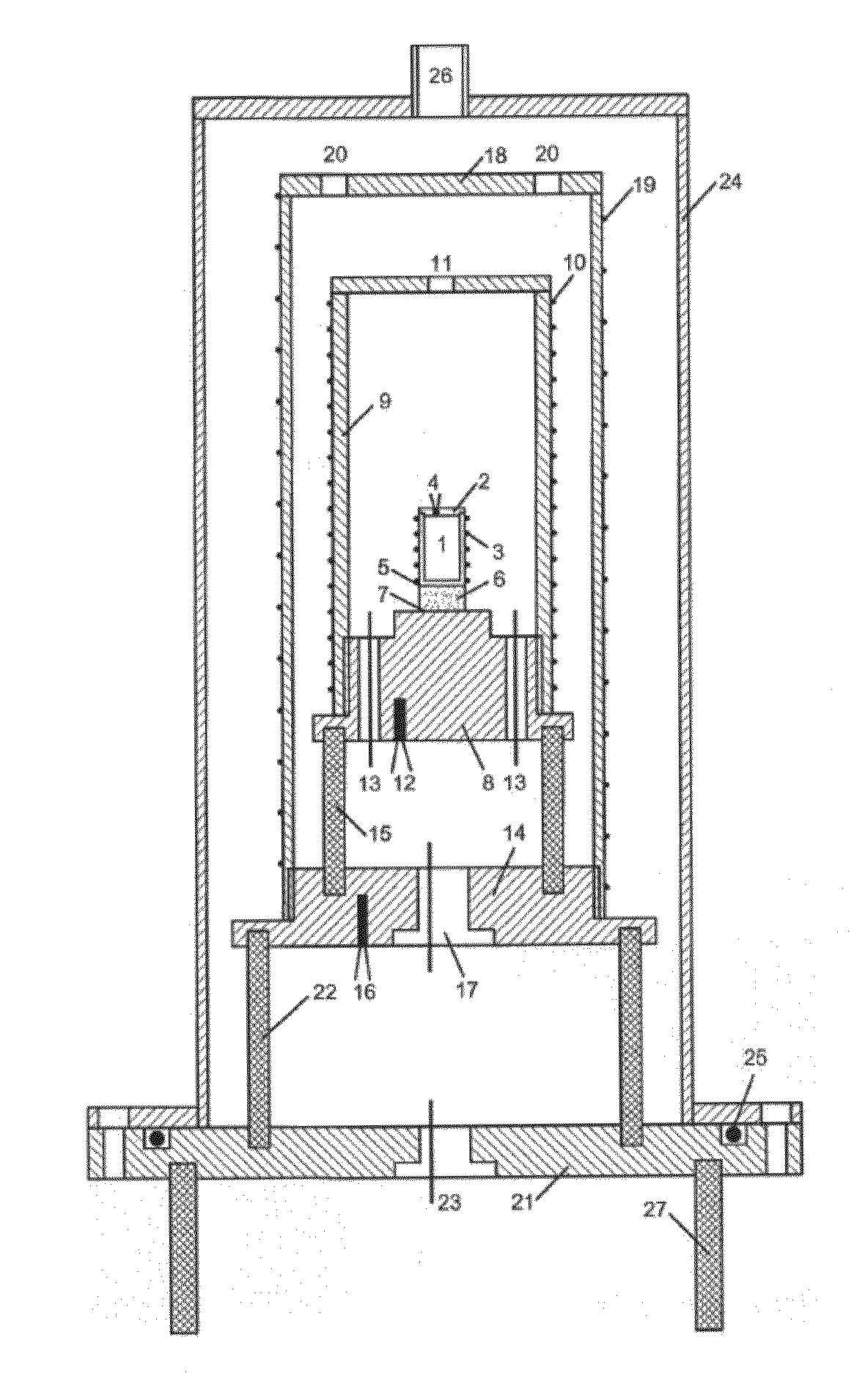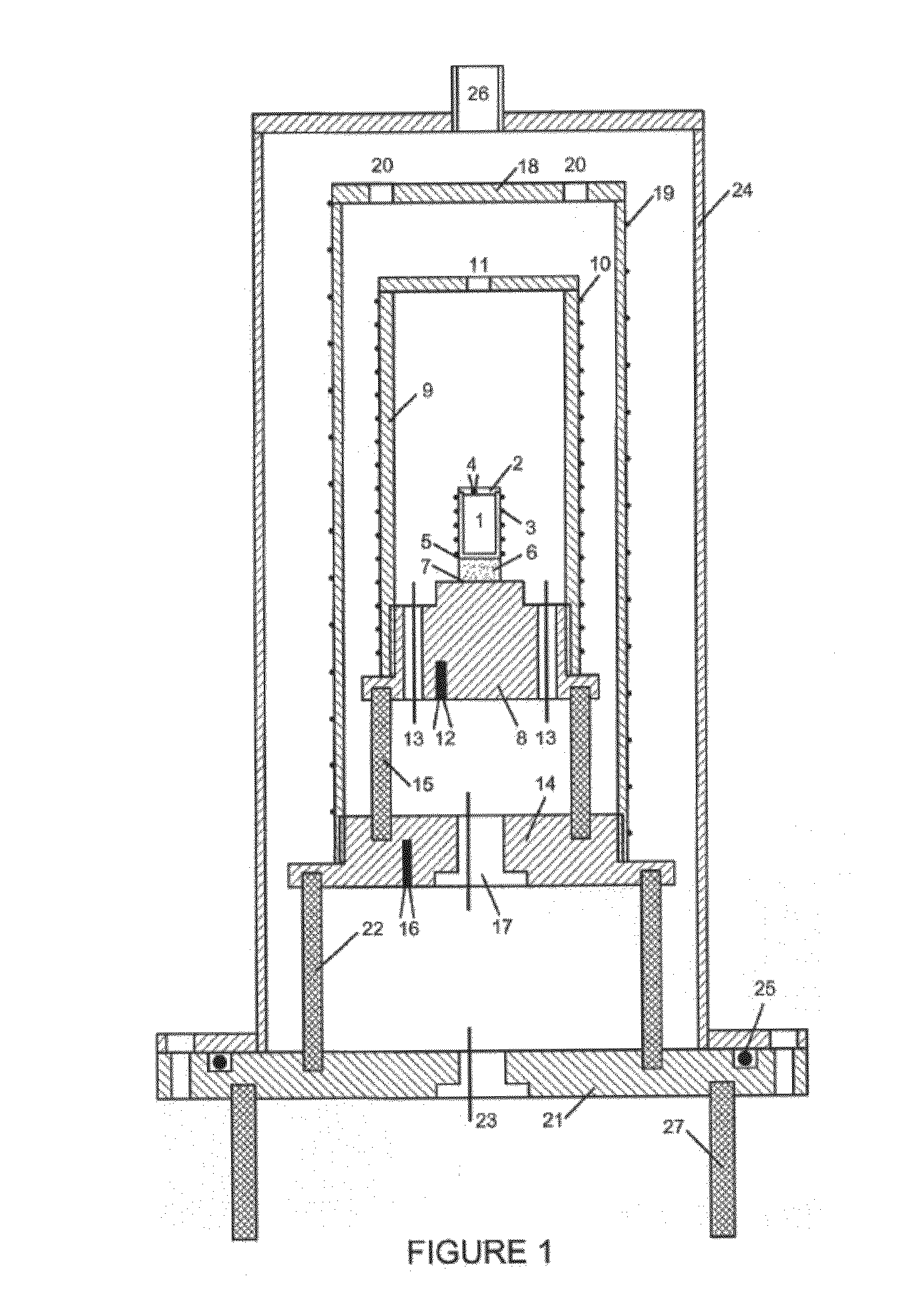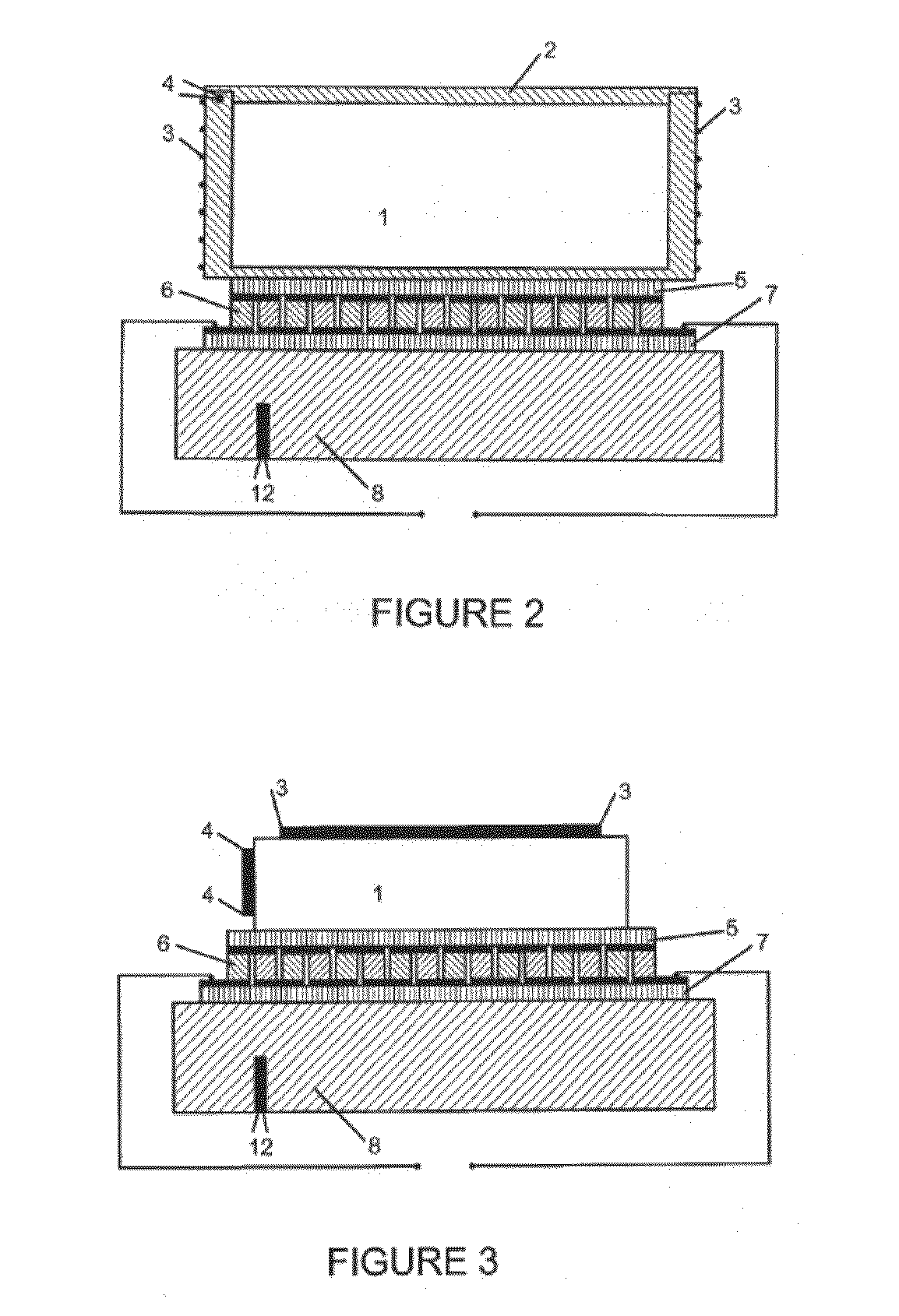Adiabatic scanning calorimeter
a scanning calorimeter and scanning calorimeter technology, applied in the field ofadiabatic scanning calorimeters, can solve the problems of time-consuming and extensive calibration (against reference thermometers) and the inability to achieve accurate absolute values of specific heat in commercial dsc (or modulated dsc)
- Summary
- Abstract
- Description
- Claims
- Application Information
AI Technical Summary
Benefits of technology
Problems solved by technology
Method used
Image
Examples
example 1
Enthalpy and Heat Capacity of First Order Transitions of an N-Alkane
[0128]Results as obtained with a Peltier element based Adiabatic Scanning Calorimeter (pASC) for phase transitions in the normal alkane tetracosane (C24) are displayed in the FIGS. 5 to 7 and explained in their legends.
example 2
Enthalpy and Heat Capacity of First and Second Order Phase Transitions in a Liquid Crystal
[0129]Results as obtained with a Peltier element based Adiabatic Scanning Calorimeter (pASC) for first and second order phase transitions in the liquid crystal octylcyanobiphenyl (8CB) are displayed in the FIGS. 9 to 14 and explained in their legends.
[0130]Particular and preferred aspects of the invention are set out in the accompanying independent and dependent claims. Features from the dependent claims may be combined with features of the independent claims and with features of other dependent claims as appropriate and not merely as explicitly set out in the claims.
[0131]Thus, the claims following the detailed description are hereby expressly incorporated into this detailed description, with each claim standing on its own as a separate embodiment of this invention.
[0132]It will be apparent to those skilled in the art that various modifications and variations can be made in the choice of the t...
PUM
| Property | Measurement | Unit |
|---|---|---|
| temperature | aaaaa | aaaaa |
| temperature | aaaaa | aaaaa |
| cryogenic temperatures | aaaaa | aaaaa |
Abstract
Description
Claims
Application Information
 Login to View More
Login to View More - R&D
- Intellectual Property
- Life Sciences
- Materials
- Tech Scout
- Unparalleled Data Quality
- Higher Quality Content
- 60% Fewer Hallucinations
Browse by: Latest US Patents, China's latest patents, Technical Efficacy Thesaurus, Application Domain, Technology Topic, Popular Technical Reports.
© 2025 PatSnap. All rights reserved.Legal|Privacy policy|Modern Slavery Act Transparency Statement|Sitemap|About US| Contact US: help@patsnap.com



